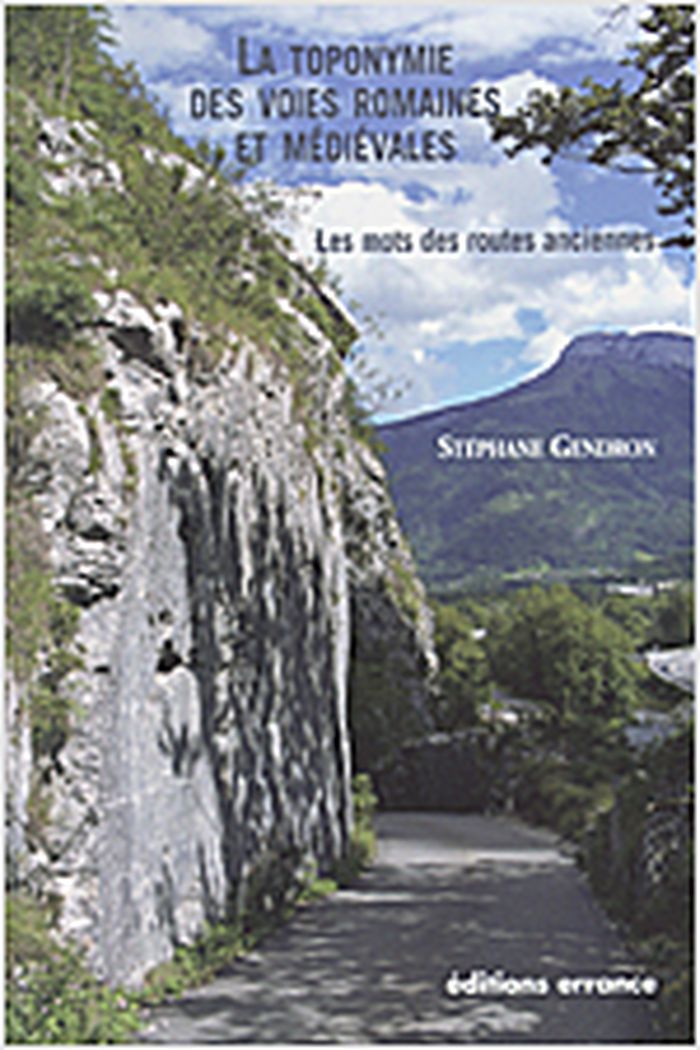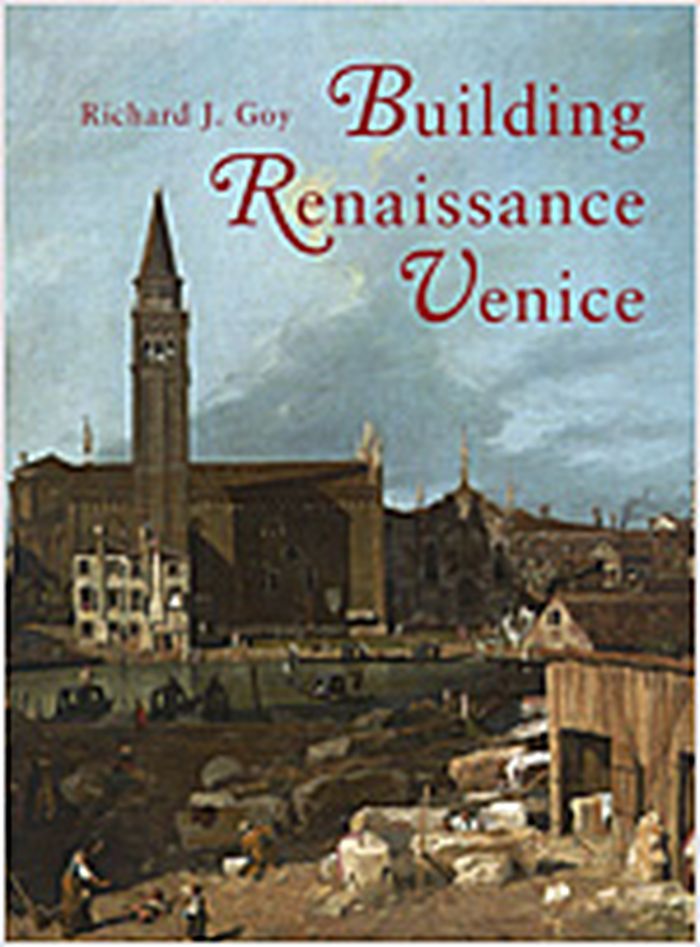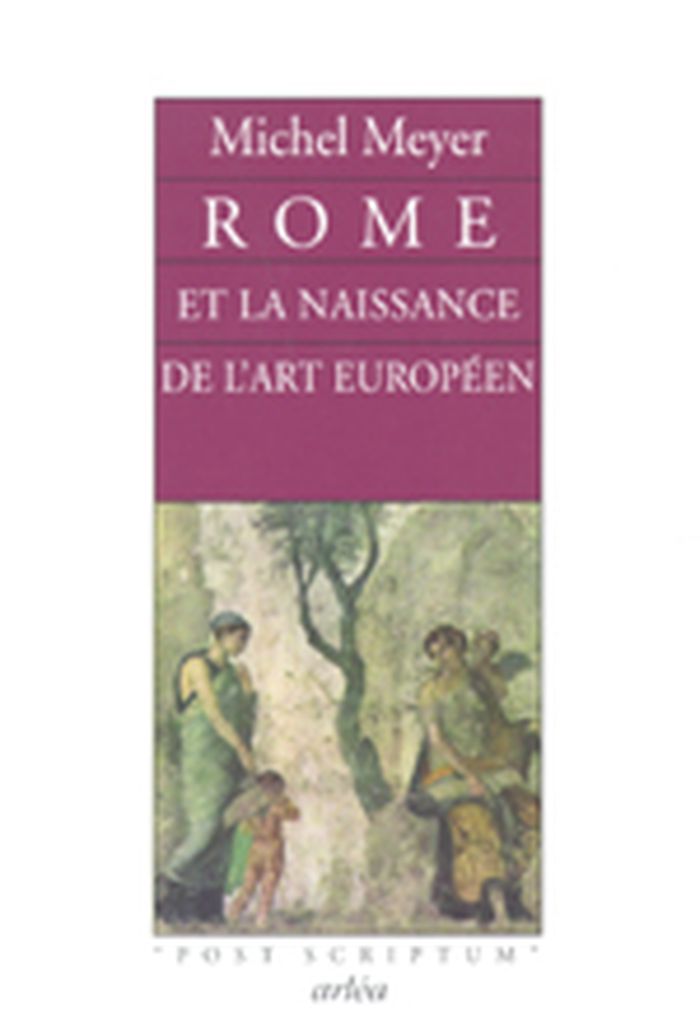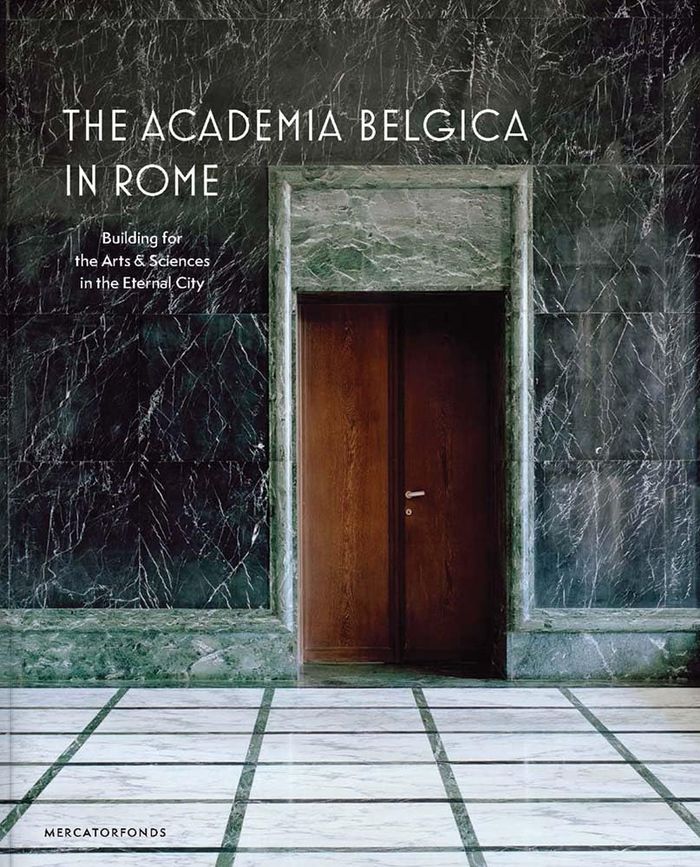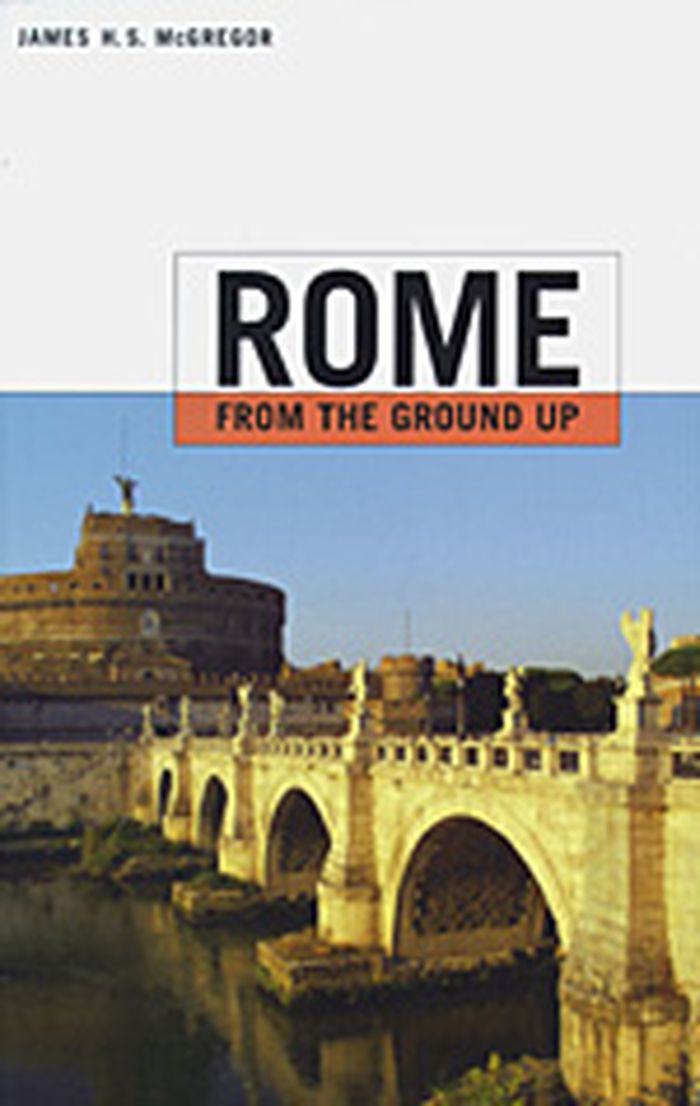livres
$49.50
(disponible sur commande)
Résumé:
Les sept civitates de Lyonnaise occidentale qui font l'objet de cet ouvrage (Osismes, Coriosolites, Vénètes, Riédons, Namnètes, Aulerques Diablintes et Andécaves) ne conservent que bien peu de souvenirs monumentaux de l'époque romaine. N'étaient les vestiges suggestifs et remarquablement mis en valeur de Jublains (Mayenne), les ruines de l'amphithéâtre et du «nymphée» de(...)
L'architecture romaine dans l'ouest de la Gaule
Actions:
Prix:
$49.50
(disponible sur commande)
Résumé:
Les sept civitates de Lyonnaise occidentale qui font l'objet de cet ouvrage (Osismes, Coriosolites, Vénètes, Riédons, Namnètes, Aulerques Diablintes et Andécaves) ne conservent que bien peu de souvenirs monumentaux de l'époque romaine. N'étaient les vestiges suggestifs et remarquablement mis en valeur de Jublains (Mayenne), les ruines de l'amphithéâtre et du «nymphée» de Gennes (Maine-et-Loire) et le sanctuaire du Haut-Bécherel, à Corseul (Côtes-d'Armor), le bilan se réduirait à quelques lambeaux d'enceintes urbaines, aux traces très arasées de quelques villae et à de maigres tronçons d'aqueducs. Encadrés par les puissantes architectures néolithiques et d'innombrables réalisations des périodes médiévale et moderne, les monuments de l'époque impériale ont longtemps eu quelque peine à satisfaire la curiosité du touriste et à susciter celle du savant. On comprend dès lors aisément que la région n'occupe qu'une place très modeste dans les synthèses, même les mieux informées, quand elle n'en est pas tout simplement absente. Cette rareté des vestiges monumentaux a ancré dans bien des esprits l'idée que ces confins occidentaux des Gaules étaient largement restés à l'écart du mouvement de romanisation, et que, pour des raisons variées - manque d'intérêt de la part du conquérant, inertie, voire défiance du provincial -, elle n'est pas devenue aussi profondément romaine que les autres secteurs de la Gaule. Les fouilles et prospections de ces dernières décennies, l'étude d'une documentation épigraphique peu abondante mais non dépourvue d'intérêt et l'inventaire des blocs d'architecture corrigent largement cette image. Si les cités de l'ouest de la Gaule n'ont jamais cédé au gigantisme, si la monumentalisation y est avant tout réservée aux villes chefs-lieux et si certains édifices font apparemment défaut aux panoplies monumentales, l'intégration à l'Empire et l'adhésion des élites aux pratiques et valeurs de la romanité trouvent, ici comme ailleurs, une traduction concrète dans l'architecture publique et privée, urbaine et rurale. C'est ce qu'entend démontrer le présent ouvrage. Il dresse d'abord un état des connaissances sur plusieurs types d'édifices, pour lesquels les données disponibles autorisent désormais l'établissement d'un bilan: les forums, les édifices religieux, les domus, les villae et les tombes monumentales. Ces études sont complétées par deux enquêtes thématiques, consacrées l'une au décor architectonique, documentation jusqu'alors pratiquement inexploitée, l'autre au financement de la parure monumentale. L'ouvrage s'achève par une tentative de bilan sur l'activité édilitaire des sept cités concernées entre la fin du Ier s. avant notre ère et la fin du IVe siècle.
livres
janvier 2007, Rennes
$51.50
(disponible sur commande)
Résumé:
Si les Gaulois et leurs prédécesseurs avaient établi des axes de communication à travers l'Europe, les Romains furent célèbres pour l'implantation systématique de réseaux routiers dont héritera le Moyen Age. Une route s'avère souvent un monument important aux yeux de la population, plus que les temples ou les théâtres. Elles traversent des territoires, sont utilisées pour(...)
La toponymie des voies romaines et médiévales : les mots des routes anciennes
Actions:
Prix:
$51.50
(disponible sur commande)
Résumé:
Si les Gaulois et leurs prédécesseurs avaient établi des axes de communication à travers l'Europe, les Romains furent célèbres pour l'implantation systématique de réseaux routiers dont héritera le Moyen Age. Une route s'avère souvent un monument important aux yeux de la population, plus que les temples ou les théâtres. Elles traversent des territoires, sont utilisées pour la vie de tous les jours, comme elles marquent le paysage. Des constructions humaines, ce sont elles qui ont laissé le plus de mots dans la mémoire du sol et dans le souvenir des hommes. Des milliers de noms dans les campagnes se rattachent aux voies, aux auberges, aux ponts, aux gués. Suivre une voie ancienne ne correspond pas seulement à faire des kilomètres ; c'est aussi une remontée dans le temps. Les noms de lieux appartiennent à l'histoire et nous guident dans différents paysages, de l'époque gauloise à la fin du Moyen Age.
Venice from the ground up
$34.95
(disponible sur commande)
Résumé:
Venice came to life on spongy mudflats at the edge of the habitable world. Protected in a tidal estuary from barbarian invaders and Byzantine overlords, the fishermen, salt gatherers, and traders who settled there crafted an amphibious way of life unlike anything the Roman Empire had ever known. James H. S. McGregor recreates this world-turned-upside-down, with its(...)
octobre 2006, Cambridge (MA), London
Venice from the ground up
Actions:
Prix:
$34.95
(disponible sur commande)
Résumé:
Venice came to life on spongy mudflats at the edge of the habitable world. Protected in a tidal estuary from barbarian invaders and Byzantine overlords, the fishermen, salt gatherers, and traders who settled there crafted an amphibious way of life unlike anything the Roman Empire had ever known. James H. S. McGregor recreates this world-turned-upside-down, with its waterways rather than roads, its boats tethered alongside dwellings, and its livelihood harvested from the sea. McGregor begins with the river currents that poured into the shallow Lagoon, carving channels in its bed and depositing islands of silt. He then describes the imaginative responses of Venetians to the demands and opportunities of this harsh environment - transforming the channels into canals, reclaiming salt marshes for the construction of massive churches, erecting a thriving marketplace and stately palaces along the Grand Canal. Through McGregor's eyes, we witness the flowering of Venice's restless creativity in the elaborate mosaics of St. Mark's soaring basilica, the expressive paintings in smaller neighborhood churches, and the colorful religious festivals - but also in theatrical productions, gambling casinos, and masked revelry, which reveal the city's less pious and orderly face. McGregor tells his unique history of Venice by drawing on a crumbling, tide-threatened cityscape and a treasure-trove of art that can still be seen in place today. The narrative follows both a chronological and geographical organization, so that readers can trace the city's evolution chapter by chapter and visitors can explore it district by district on foot and by boat.
$29.00
(disponible sur commande)
Résumé:
This book brings to life the story of the construction of some of the most outstanding early Renaissance buildings in Venice. Through a series of individual case studies, Richard J. Goy explores how and why buildings came to be built. He addresses the practical issues of constructing such buildings as the Torre dell’Orologio in Piazza San Marco, the Arsenale Gate, and the(...)
juin 2006, New Haven / London
Building Renaissance Venice : patrons, architects and builders c. 1430-1500
Actions:
Prix:
$29.00
(disponible sur commande)
Résumé:
This book brings to life the story of the construction of some of the most outstanding early Renaissance buildings in Venice. Through a series of individual case studies, Richard J. Goy explores how and why buildings came to be built. He addresses the practical issues of constructing such buildings as the Torre dell’Orologio in Piazza San Marco, the Arsenale Gate, and the churches of Santa Maria della Carita and San Zaccaria, focusing particular attention on the process of patronage. The book traces the complete process of creating important buildings, from the earliest conception in the minds of the patrons—the Venetian state or other institutional patrons—through the choice of architect, the employment of craftsmen, and the selection of materials. In an interesting analysis of the participants’ roles, Goy highlights the emerging importance of the superintending master, the protomaestro.
The foundation of Rome
$39.95
(disponible sur commande)
Résumé:
This book deals with `the historical anthropology of the ancient world', investigating the way in which Romans represented the founding figure of Romulus and the foundation of Rome in the mid-8th century BC, rather than examining whether it really did happen that way. Augusto Fraschetti presents the history of the foundation of Rome as it existed in the writings of(...)
The foundation of Rome
Actions:
Prix:
$39.95
(disponible sur commande)
Résumé:
This book deals with `the historical anthropology of the ancient world', investigating the way in which Romans represented the founding figure of Romulus and the foundation of Rome in the mid-8th century BC, rather than examining whether it really did happen that way. Augusto Fraschetti presents the history of the foundation of Rome as it existed in the writings of historians such as Tacitus and Livy, by poets such as Ovid and by Cicero. In examining events in the life of Romulus, such as his war-making skills, his troubled relationship with the senate and the dismemberment of his body, Fraschetti asks whether authors exploited these episodes to comment upon actual events such as the assassination of Casear. This book is also about how Romans during the reign of Augustus, created their own history in order to account for and justify their future imperial glory, at the cost of their republican ideals. Appendices examine the ambiguous figure of Tarpeia and the archaeological discovery of a piece of wall at the foot of the Palatine Hill which has been dated to the 8th century BC. Translated from the Italian by Marian Hill and Kevin Windle.
$49.95
(disponible sur commande)
Résumé:
In 1452, Florentine sculptor Lorenzo Ghiberti unveiled a masterpiece that had been a quarter-century in the making: ten bronze panels depicting intricate scenes from the Old Testament. The monumental gilded bronze doors (each more than 15 feet tall) were designed for the Baptistery in the Piazza del Duomo in Florence. Centuries of admirers have considered “The Gates of(...)
The gates of paradise : Lorenzo Ghiberti's masterpiece
Actions:
Prix:
$49.95
(disponible sur commande)
Résumé:
In 1452, Florentine sculptor Lorenzo Ghiberti unveiled a masterpiece that had been a quarter-century in the making: ten bronze panels depicting intricate scenes from the Old Testament. The monumental gilded bronze doors (each more than 15 feet tall) were designed for the Baptistery in the Piazza del Duomo in Florence. Centuries of admirers have considered “The Gates of Paradise” one of the great masterworks of Western art. This extensively illustrated book displays the full glory and elaborate details of many of the newly restored bronze panels, the extraordinary work of the conservators and restorers who cleaned the priceless doors. In a series of fascinating chapters, expert contributors capture Ghiberti’s world, his remarkable talent at representing human emotion in rich illusionistic settings, the relationships between Renaissance patrons and artists, and the collaborations and rivalries among artists. Other chapters explore the challenging craft of bronze sculpture, Ghiberti’s casting and finishing techniques, and the painstaking process involved in documenting and restoring the treasured doors. A chronology of Ghiberti’s life completes this lavishly produced volume.
$41.95
(disponible en magasin)
Résumé:
L'Europe actuelle est héritière de la Rome antique, cette mosaïque de nations unies par une même culture dans un territoire aussi vaste qu'il ne l'est aujourd'hui. La littérature, l'architecture, la peinture et la sculpture y ont été un langage commun, de l'Espagne à la Turquie, en passant par l'Afrique du Nord. Forum, aqueduc, amphithéâtre, villa romaine, où qu'ils se(...)
Rome et la naissance de l'art européen
Actions:
Prix:
$41.95
(disponible en magasin)
Résumé:
L'Europe actuelle est héritière de la Rome antique, cette mosaïque de nations unies par une même culture dans un territoire aussi vaste qu'il ne l'est aujourd'hui. La littérature, l'architecture, la peinture et la sculpture y ont été un langage commun, de l'Espagne à la Turquie, en passant par l'Afrique du Nord. Forum, aqueduc, amphithéâtre, villa romaine, où qu'ils se trouvent, traduisent cette cohérence et cette unité. Michel Meyer nous offre ici une synthèse sur l'art romain, la première en français depuis de nombreuses décennies. En apportant les preuves de sa grande originalité, il nous en propose une lecture philosophique, historique, esthétique, sociologique et politique, et nous aide à découvrir cette civilisation qui est l'ancêtre de la nôtre.
St. Peter's
$22.95
(disponible sur commande)
Résumé:
Built by the decree of Constantine, rebuilt by some of the most distinguished architects in Renaissance Italy, emulated by Hitler's architect in his vision for Germania, immortalized on film by Fellini, and fictionalized by a modern American bestseller, St. Peter's is the most easily recognizable church in the world. This book is a cultural history of one of the most(...)
St. Peter's
Actions:
Prix:
$22.95
(disponible sur commande)
Résumé:
Built by the decree of Constantine, rebuilt by some of the most distinguished architects in Renaissance Italy, emulated by Hitler's architect in his vision for Germania, immortalized on film by Fellini, and fictionalized by a modern American bestseller, St. Peter's is the most easily recognizable church in the world. This book is a cultural history of one of the most significant structures in the West. It bears the imprint of Bramante, Raphael, Michelangelo, Bernini, and Canova. For Grand Tourists of the eighteenth century, St. Peter's exemplified the sublime. It continues to fascinate visitors today and appears globally as a familiar symbol of the papacy and of the Catholic Church itself. The church was first built in the fourth century on what is thought to be the tomb of Peter - the rock upon which Christ decreed his church shall be built. After twelve hundred years, the church was largely demolished and rebuilt in the sixteenth century when it came to acquire its present-day form. St. Peter's awes the visitor by its gigantic proportions, creating a city within itself. It is the mother church, the womb from which churches around the world have taken inspiration. This book covers the social, political, and architectural history of the church from the fourth century to the present. From the threshold, to the subterranean Roman necropolis, to the dizzying heights of the dome, this book provides rare perspectives and contexts for understanding the shape and significance of the most illustrious church in the world.
$85.00
(disponible sur commande)
Résumé:
This book is the first publication on the building of the Academia Belgica in Rome, a residence for Belgian researchers and artists and a centre for scientific and cultural activities. Constructed between 1937 and 1939 by the Italian Gino Cipriani and the Belgian Jean Hendrickx-Van den Bosch, in a style both modernist and Art Deco, the building has maintained not only its(...)
janvier 2024
The Academia Belgica in Rome: Building for the arts and sciences in the eternal city
Actions:
Prix:
$85.00
(disponible sur commande)
Résumé:
This book is the first publication on the building of the Academia Belgica in Rome, a residence for Belgian researchers and artists and a centre for scientific and cultural activities. Constructed between 1937 and 1939 by the Italian Gino Cipriani and the Belgian Jean Hendrickx-Van den Bosch, in a style both modernist and Art Deco, the building has maintained not only its original exterior but also in large parts its interior decorations and even furniture. The authors investigate the conception and realisation of the original building and its interior design programme, within the context of the cultural and political exchange between Belgium and Italy in the inter-war period. This richly illustrated volume includes original photographs of the building and its furniture, architectural plans, drawings and designs, plus a new series of commissioned photographs of the building by Belgian architectural photographer Maxime Delvaux.
Rome from the ground up
$37.50
(disponible sur commande)
Résumé:
Rome is not one city but many, each with its own history unfolding from a different center: now the trading port on the Tiber; now the Forum of antiquity; the Palatine of imperial power; the Lateran Church of Christian ascendancy; the Vatican; the Quirinal palace. Beginning with the very shaping of the ground on which Rome first rose, this book conjures all these cities,(...)
octobre 2005, Cambridge
Rome from the ground up
Actions:
Prix:
$37.50
(disponible sur commande)
Résumé:
Rome is not one city but many, each with its own history unfolding from a different center: now the trading port on the Tiber; now the Forum of antiquity; the Palatine of imperial power; the Lateran Church of Christian ascendancy; the Vatican; the Quirinal palace. Beginning with the very shaping of the ground on which Rome first rose, this book conjures all these cities, past and present, conducting the reader through time and space to the complex and shifting realities - architectural, historical, political, and social - that constitute Rome.
